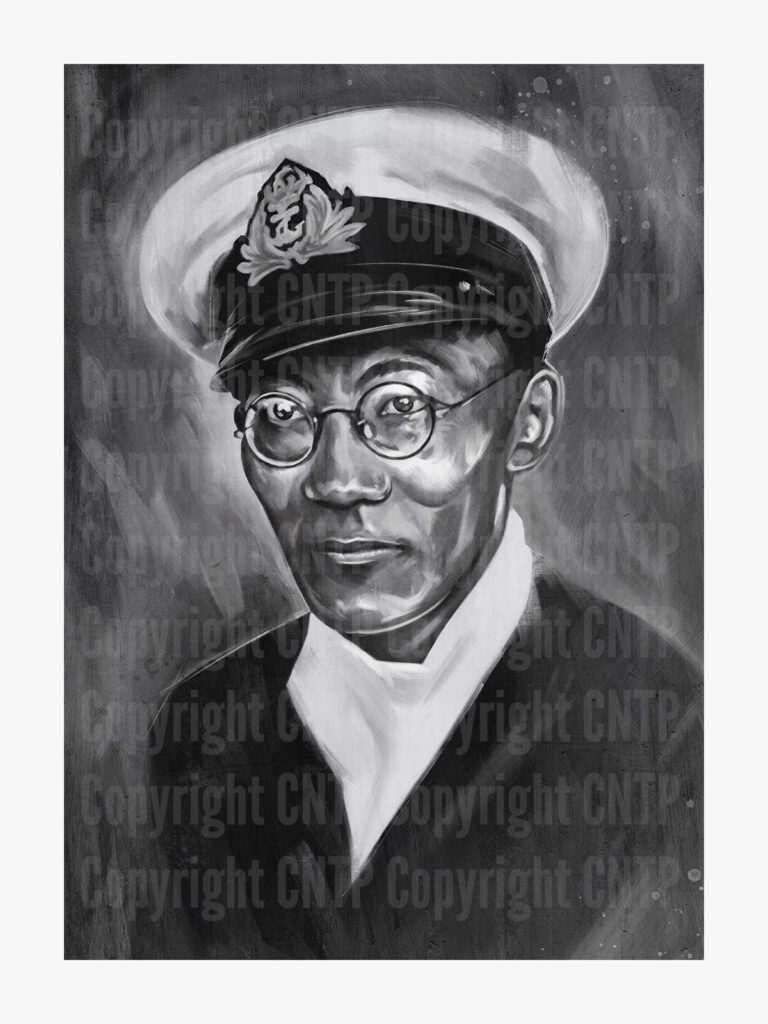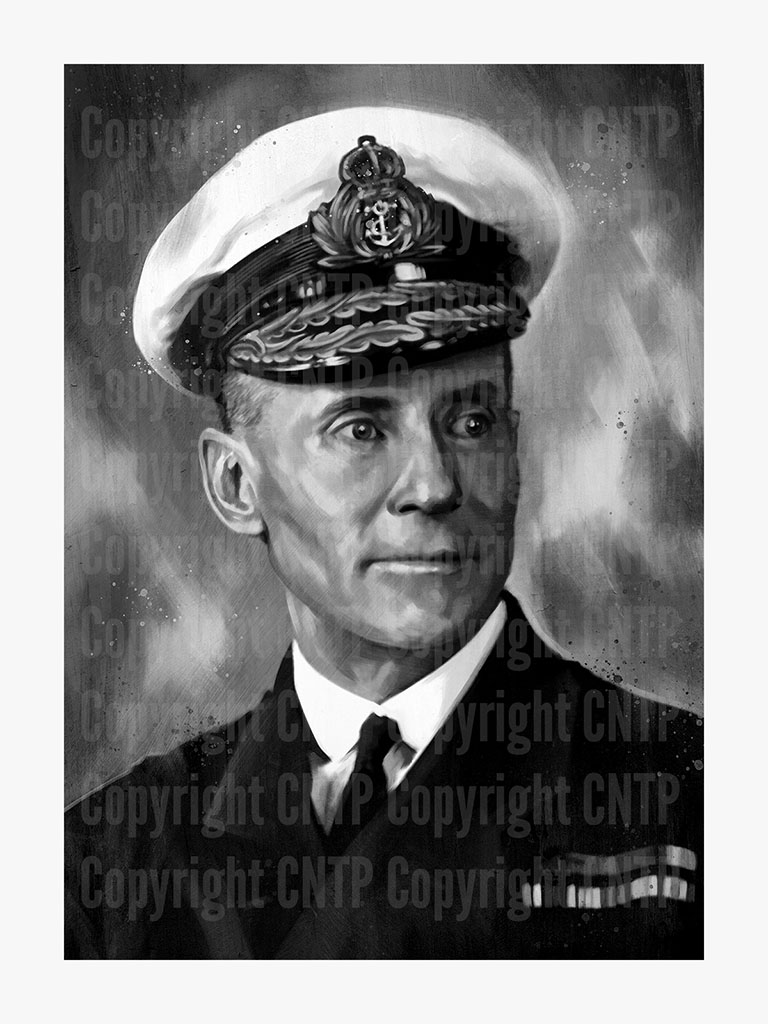Lieutenant Robert Hampton Gray VC, DSC, RCNVR
“Displaying valour, fighting spirit, and the most inspiring leadership in an aerial attack on an enemy destroyer”
In the midst of the Great War, Robert “Hammy” Hampton Gray was born in the small city of Trail, British Columbia, on November 2, 1917 (Turner). His father established a business in Nelson – J.B. Gray Jeweler: Watch Maker and Optometrist with the slogan “Good Goods at Gray’s” – and Gray spent his early years there, graduating from the local high school in 1936 (Service File). That same year he enrolled in a Bacholor of Arts program at the University of Alberta in Edmonton and then switched to the University of British Columbia (UBC), completing his undergraduate degree in 1940. Gray was quite popular at UBC – he was associate editor of the yearbook “Totem”, a member of the the Phi Delta Theta fraternity, enrolled in the Canadian Officer’s Training Corps, and well regarded by his peers (Service File). With his formal education finished, he went to HMCS Tecumseh in Calgary, Alberta and enlisted as an Ordinary Seaman with the Royal Canadian Navy Volunteer Reserve (RCNVR) in July 1940 (Service File). He went overseas for training at HMS Raliegh and, showing promise, moved to HMS St. Vincent to join the Royal Navy’s Fleet Air Arm. In December 1940, he completed his initial training and earned a commission as a Sub-Lieutenant (Service File). He then returned to Canada for six months, undergoing operational flight training at Collins Bay, near Kingston, Ontario (Service File).

Gray returned to England, joining No. 757 Squadron at Winchester. The next few months he flew Hawker Hurricanes with several squadrons, including 795, 803, and 877, at times based on land in Nairobi, Kenya, and also aboard HMS Illustrious in the Mediterranean (Service File). He earned his callsign “Hammy” during this time. In December 1942, he rose to the rank of Lieutenant and by 1944 was training in Vought F4U Corsair fighters. He subsequently joined Naval Air Squadron (NAS) 1841 in HMS Formidable (Service File).
During August 21-29th, he was part of Operation Goodwood, conducting air attacks on the battleship Tirpitz in Norway. He was Mentioned in Dispatches for his part in “strafing of enemy heavy and light gun positions around Alten Fiord” (Service File), clearing a path for Barracuda Torpedo planes to launch an attack on the German ship. He then led his section, engaging three Narvik Class Destroyers, which were anchored in the Fiord. Under fierce counter-fire, Gray’s aircraft took damage from “a 20 or 40 millimeter shell which carried most of his rudder away.” (Service File) Despite the damage, he skillfully returned to his ship, circling in the waiting position for 45 minutes before taking his turn to land. He was subsequently awarded another Mention in Dispatches on January 16, 1945, for “for undaunted courage, skill and determination in carrying out daring attacks on the German battleship Tirpitz.” (NavalMilitaryMuseum)
Formidable joined the British Pacific Fleet in April 1945, assisting in the invasion of Okinawa. By the summer Gray was taking part in air strikes on the Japanese mainland, leading a strafing run on Tokyo airfields on July 18th. On the 24th, his flight attacked a Japanese merchant ship, two seaplane bases, and one airbase. Four days later, he helped sink a Japanese Destroyer near the capital, for which he received a Distinguished Service Cross (Crowsnest). The citation would later read “For determination and address in air attacks on targets in Japan.”
On August 9, 1945 – three hours before the Enola Gay would drop the second atomic bomb – Gray entered his Corsair and took off from Formidable’s deck. It was around 0800hrs, and he was leading eight aircraft as the senior pilot. Their mission was to attack and destroy an airfield at Matsushima, but, at the last minute, they were instead directed to sink a Japanese warship in Onagawa Bay (Bishop). He led his planes, each carrying two lethal 500-pound bombs, to 10,000 feet westerly, reaching Honshu coast after travelling 150 miles (Bishop). At this point Gray spotted several Japanese warships in the bay, “including the sloop Amakusa, two minesweepers, a training ship and several smaller submarine chasers and shipping vessels.” (Bishop) He pulled at the stick, his aircraft coming about 180 degrees and dropping down towards the targets. In formation, the flight came down along the valley and crossed the shoreline, intent on executing a “skip-bombing attack”, whereby their 500-pound bombs would bounce off the water like a stone and strike their targets hulls. It was a more accurate way of attacking, increasing the likelihood of striking the target, but it was a risky move that made them vulnerable to on-land anti-aircraft fire (Bishop). Both ships and shore batteries opened fire, sending a hail-storm of bullets and flak into the sky.
Gray ignored the gunfire, concentrating his sights on Amakusa situated in the middle of the ships. Guns trained on his aircraft, ripping into his plane and causing one of his bombs to fall loose from its clamps. A fire started but he refused to break away, zoning-in on the ship. At fifty yards, he dropped his remaining bomb. The projectile fell on an angle, skipping along the slight, blue waves and slamming perfectly amidships into Amakusa’s hull, halfway above the waterline. It was a fatal hit.
Before the other pilots could celebrate, they noticed something off. Gray’s plane pulled away to starboard in a gradual turn, slowly rolling onto its back, before diving into the bay. And in an explosions of water and bits of aircraft, Gray was gone. Over the years, many have suspected he took a round during his dive and was already dead. Although, without a body they couldn’t verify the deduction. Gray’s body was never found and, based on eye-witness accounts, if he wasn’t already dead by the time his plane crashed, the impact would have surely killed him.
He would posthumously be awarded the Victoria Cross for his gallantry, his citation reading:
“…for great valour in leading an attack on a Japanese destroyer in Onagawa Wan on 9th August, 1945. In the face of fire from shore batteries and a heavy concentration of fire from some five warships Lieutenant Gray pressed home his attack, flying very low in order to ensure success, and, although he was hit and his aircraft was in flames, he obtained at least one direct hit, sinking the destroyer. Lieutenant Gray has consistently shown a brilliant fighting spirit and most inspiring leadership.”
Gray would not only be the last Victoria Cross recipient of the Second World War, but the last Canadian to be awarded the medal. The sixth Harry DeWolf-class offshore patrol vessel for the Royal Canadian Navy is to be named in Grey’s honour.
Gray’s Awards and Decorations:
Victoria Cross, Distinguished Service Cross, 1939-45 Star, Atlantic Star, Africa Star, Pacific Star, Defence Medal (UK), CVSM with Overseas Bar, War Medal with MiD.
In 1946, the Geographic Board of Canada named a mountain in Kokanee Glacier Provincial Park, British Columbia, after Gray and his brother, Flt Sgt John Balfour Gray, RCAF, who was also killed in World War II. An elementary school at CFB Shearwater was also named after him, as well as a Sea and Air Cadet Corps. Numerous memorials to Gray exist, making him the most noted CNTP nominee.
Sources:
Service File
Turner, J. F. V.C.’s of the Royal Navy Harrap London 1957
“Robert Hampton Gray VC, DSC”. The Crowsnest. Vol. 2, no. 12. Queen’s Printer. October 1950. pp. 16–17.
https://www.canada.ca/en/department-national-defence/services/medals/victoria-cross-recipients/robert-hampton-gray.html
Prepared By:
Sean E. Livingston, Co-Founder CNTP and Author Oakville’s Flower: The History of HMCS Oakville


